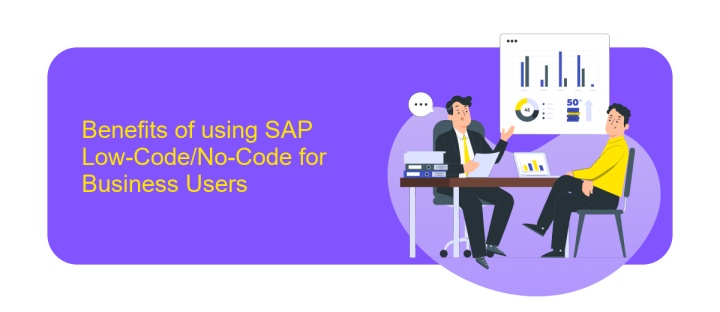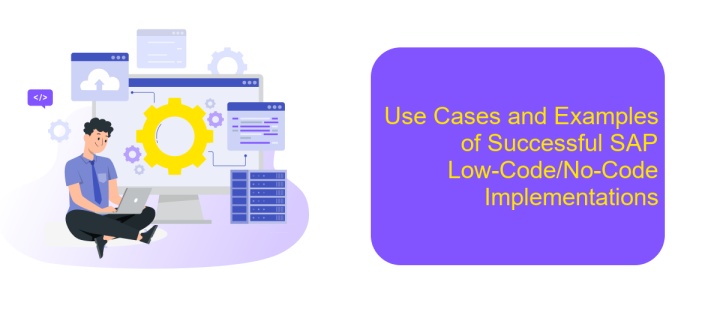SAP Low-Code
In today's rapidly evolving digital landscape, businesses are increasingly seeking agile solutions to accelerate their development processes. SAP Low-Code platforms offer a transformative approach, enabling both professional developers and business users to create applications with minimal coding. By leveraging intuitive interfaces and pre-built templates, organizations can streamline workflows, enhance productivity, and drive innovation, all while reducing the time and cost traditionally associated with software development.
Introduction to SAP Low-Code/No-Code Platforms
SAP Low-Code/No-Code platforms are revolutionizing the way businesses approach software development by simplifying the process and reducing the need for extensive coding expertise. These platforms empower users, regardless of their technical background, to create applications quickly and efficiently. By leveraging intuitive drag-and-drop interfaces and pre-built templates, SAP enables organizations to accelerate digital transformation, enhance agility, and reduce development costs.
- Empowers non-technical users to develop applications.
- Accelerates the digital transformation process.
- Reduces the time and cost associated with traditional development.
- Enhances collaboration between business and IT teams.
As businesses continue to seek ways to innovate and stay competitive, SAP Low-Code/No-Code platforms offer a strategic advantage. By bridging the gap between business needs and IT capabilities, these platforms facilitate rapid application development and deployment. This not only helps organizations respond swiftly to market changes but also fosters a culture of innovation and continuous improvement. Embracing SAP's low-code/no-code solutions can be a significant step towards achieving operational excellence and digital resilience.
Benefits of using SAP Low-Code/No-Code for Business Users

SAP Low-Code/No-Code platforms offer significant advantages for business users by simplifying the application development process. These tools empower users without extensive programming knowledge to create and customize applications, enhancing productivity and innovation. By reducing reliance on IT departments, business users can rapidly prototype and deploy solutions tailored to their specific needs, leading to faster decision-making and improved operational efficiency. This democratization of app development allows for more agile responses to market changes and internal demands.
Furthermore, SAP Low-Code/No-Code solutions facilitate seamless integration with existing systems, enhancing data flow and connectivity. Tools like ApiX-Drive can further streamline these integrations by offering user-friendly interfaces to connect various applications and automate workflows without coding. This capability ensures that business users can maintain a cohesive technology ecosystem, enhancing data accuracy and accessibility. As a result, organizations can achieve greater flexibility, reduce development costs, and encourage a culture of continuous improvement and digital transformation.
Key features and capabilities of SAP Low-Code/No-Code solutions

SAP Low-Code/No-Code solutions empower businesses to rapidly develop applications with minimal coding expertise, streamlining operations and enhancing innovation. These platforms are designed to be user-friendly, enabling both professional developers and business users to create functional applications efficiently. By leveraging these tools, organizations can accelerate their digital transformation journey, reduce development costs, and improve time-to-market for new solutions.
- Drag-and-Drop Interface: Simplifies application design with intuitive visual elements, allowing users to build applications quickly without writing extensive code.
- Pre-Built Templates and Modules: Offers a library of ready-made components to expedite development processes, ensuring consistency and reducing errors.
- Integration Capabilities: Seamlessly connects with existing SAP systems and third-party applications, enhancing data flow and operational efficiency.
- Scalability and Security: Provides robust security features and scalable infrastructure to support growing business needs and protect sensitive data.
- Collaboration Tools: Facilitates teamwork by enabling multiple users to work on the same project simultaneously, improving productivity and innovation.
Overall, SAP Low-Code/No-Code solutions are pivotal for organizations aiming to innovate rapidly while maintaining control over their IT landscape. By simplifying the development process, these tools enable businesses to respond swiftly to market changes and customer demands, fostering a culture of continuous improvement and agility.
Use Cases and Examples of Successful SAP Low-Code/No-Code Implementations

SAP Low-Code/No-Code platforms have become a game-changer for businesses seeking to accelerate digital transformation. By empowering non-technical users to create applications, these platforms reduce dependency on IT departments and expedite project timelines. Organizations across various industries are leveraging SAP Low-Code/No-Code solutions to streamline processes, enhance customer experiences, and drive innovation.
One notable use case is in the retail sector, where companies utilize these platforms to develop custom inventory management applications. This allows them to track stock levels in real-time, optimize supply chain operations, and improve decision-making. In the finance industry, firms are automating complex workflows, such as loan processing and compliance checks, significantly reducing processing times and operational costs.
- Retailers creating dynamic pricing models to respond to market changes.
- Healthcare providers developing patient management systems for better care coordination.
- Manufacturers optimizing production schedules through real-time data analysis.
These examples illustrate the versatility and impact of SAP Low-Code/No-Code implementations. By enabling rapid application development and deployment, businesses can remain agile and competitive in an ever-evolving digital landscape. As more organizations adopt these solutions, the potential for innovation and efficiency continues to grow.
- Automate the work of an online store or landing
- Empower through integration
- Don't spend money on programmers and integrators
- Save time by automating routine tasks
Future of SAP Low-Code/No-Code and its impact on businesses
The future of SAP Low-Code/No-Code platforms is poised to revolutionize how businesses approach software development and process automation. As organizations increasingly seek agile and cost-effective solutions, these platforms empower users without extensive programming skills to create applications and automate workflows. This democratization of technology enhances innovation and accelerates digital transformation, allowing businesses to respond swiftly to market changes and customer demands.
Moreover, the integration capabilities of SAP Low-Code/No-Code solutions, coupled with services like ApiX-Drive, streamline the process of connecting various applications and systems. ApiX-Drive facilitates seamless integrations, enabling businesses to automate data transfers and synchronize processes across platforms effortlessly. This not only reduces the complexity of IT landscapes but also optimizes operational efficiency. As more enterprises adopt these technologies, the impact on business agility, resource allocation, and competitive advantage will be profound, driving a new era of digital empowerment and strategic growth.
FAQ
What is SAP Low-Code?
How can SAP Low-Code benefit my business?
Can SAP Low-Code be integrated with other systems?
What skills are needed to use SAP Low-Code?
How do I automate processes using SAP Low-Code?
Apix-Drive will help optimize business processes, save you from a lot of routine tasks and unnecessary costs for automation, attracting additional specialists. Try setting up a free test connection with ApiX-Drive and see for yourself. Now you have to think about where to invest the freed time and money!


